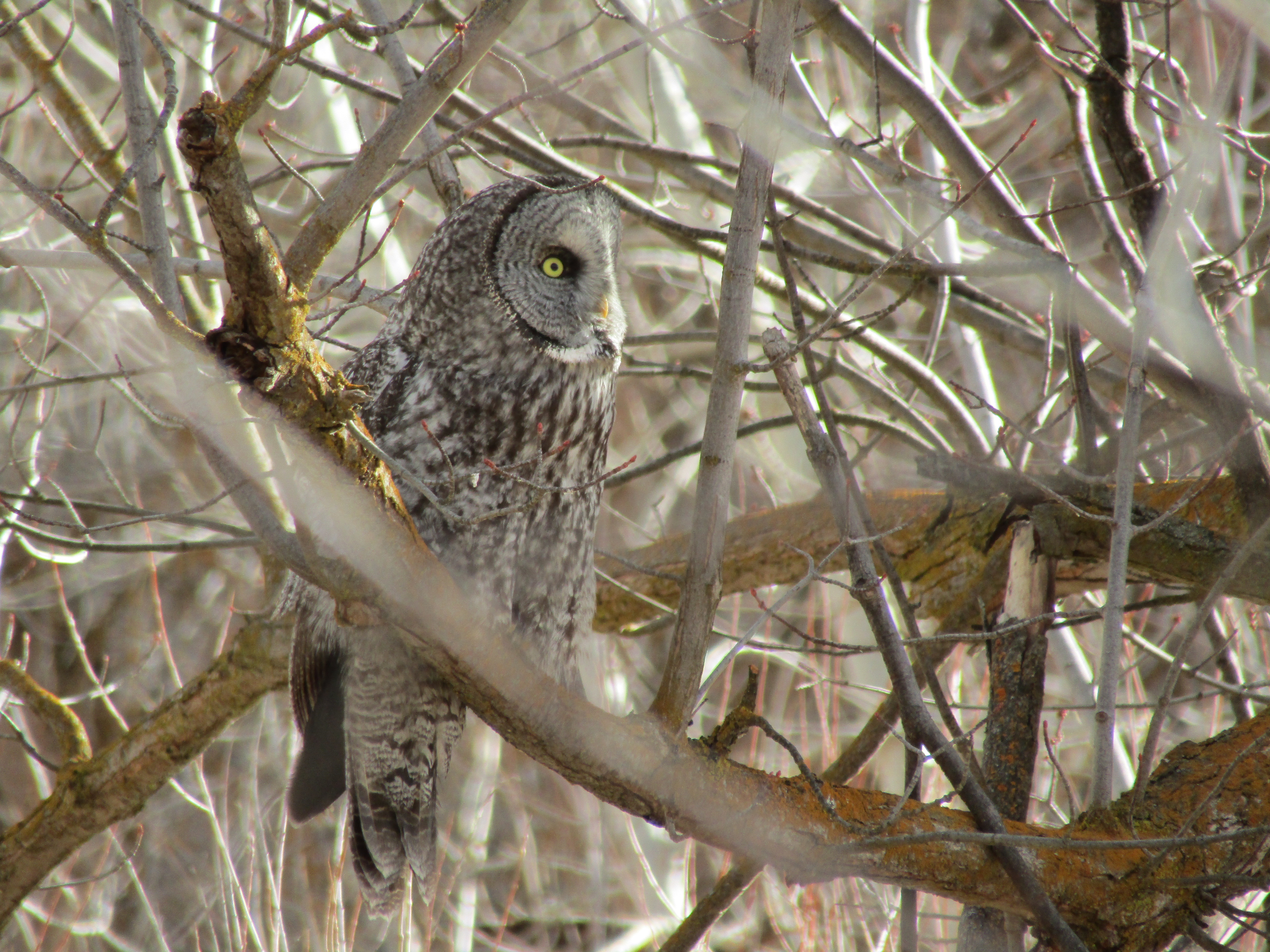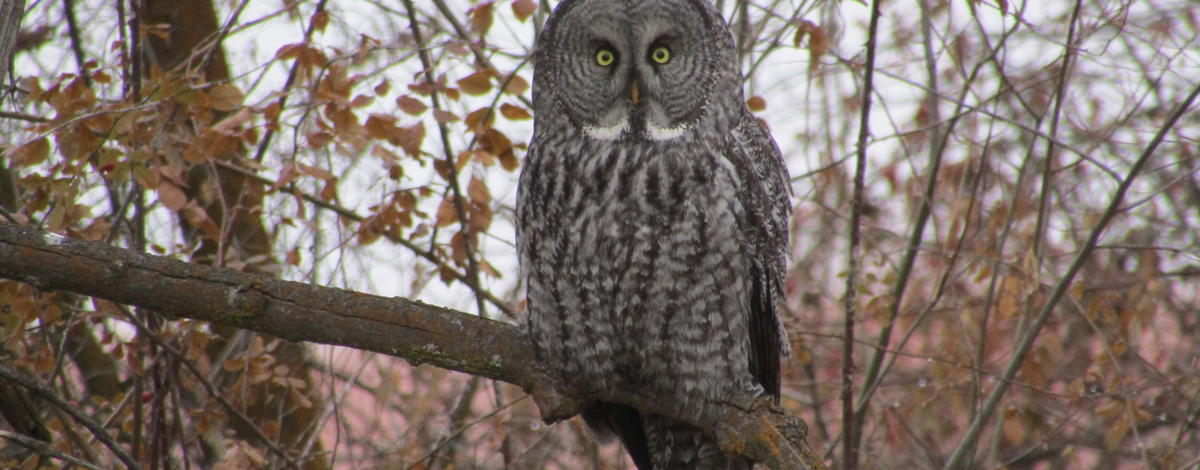A great gray owl — a relatively uncommon raptor in Southwest Idaho — was recently spotted by birders at a popular birding location in the region, and Fish and Game biologists are reminding people who are eager to snap the perfect photo to be respectful of birds and their habitats.

While the majority of birders and wildlife photographers observe and capture photos of birds responsibly, there have occasionally been issues with people harassing or disturbing birds. Those problems are often amplified when an uncommon species is spotted and people travel from far and wide to catch a glimpse.
Habitat biologist Steve Dempsey said that over-eager photographers sometimes unintentionally get too close to their subjects, causing them to flush from roosts or nest areas. Others intentionally attempt to flush them in order to get a photo of their subject in flight. Whether intentional or unintentional, the effects are the same: added stress for the bird.
“We all appreciate and share in the excitement of spotting an uncommon bird species on the landscape,” said Steve Dempsey, habitat biologist. “But it’s important that we don’t let that excitement cause us to create an unnecessary disturbance for the birds we are observing or photographing.”
The National Audubon Society offers the following tips to photographers to avoid unnecessary disturbance or stress to birds:
- Use a telephoto lens and maintain enough distance to allow your subject to behave naturally. Blinds offer a great way to watch and photograph or record video footage of birds without disturbing them.
- Never advance on birds with the intention of making them fly, whether they are lone birds or flocks of birds. This disrupts natural processes such as resting, foraging, or hunting, and causes them to expend energy unnecessarily.
- If your approach causes a bird to flush (fly or run away) or change its behavior, you’re too close. Some birds may “freeze” in place rather than fly away, or may hunch into a protective, aggressive, or pre-flight stance. Watch for changes in posture indicating that a bird is stressed, and if you see these, back away. If focused on you, birds may miss a predator.
- Use flash sparingly (if at all), as a supplement to natural light. Avoid the use of flash on nocturnal birds (e.g., owls, nightjars) at night, as it may temporarily limit their ability to hunt for food or avoid obstacles.
- Learn the rules and laws that apply to the location. If minimum distances exist for proximity to wildlife, follow them.
- Before sharing locations of specific birds with other photographers, videographers, or birders, think carefully about potential impacts to the birds or their habitats, both individual and cumulative.
- Remove GPS data from your images/videos for rare or sensitive species like owls.
- Do not use drones to photograph or record video footage of birds, especially at their nests. Although drones can be useful for researchers and biologists documenting bird populations (such as at island nesting colonies), drones in general can be very disruptive to birds. They are also illegal in national parks and some state parks (and in Idaho, without prior authorization, IDAPA code 13.01.03 prohibits the launching or landing of drones on lands owned or controlled by the Department of Fish and Game except on public landing strips). Be cautious with remotely triggered cameras. Setting a trap around a fresh kill or cache is generally acceptable, but supplying bait or other lure in order to attract an animal is not. Never use direct flash, which may temporarily blind owls; a flash with a filter that lets only infrared light through is acceptable.
- Concern for birds’ habitat is also essential. Be aware and respectful of your surroundings. Avoid trampling sensitive vegetation or disturbing other wildlife.

